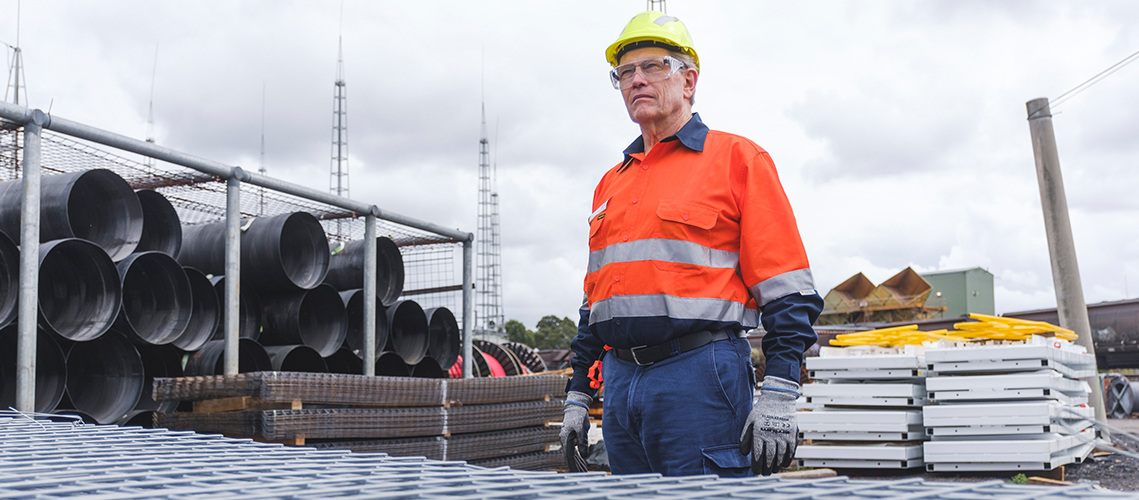At a glance
- Sustainability is a strong trend in the global construction sector
- Steel innovation in Australia leads to low carbon outcome
- Lighter, stronger steel provides benifits to other sectors and improves freight and handling
A steel breakthrough in Australia, that has global potential, is opening the way for more sustainable buildings.
Sustainability is one of the strongest trends in the global construction sector.
With tenants and end users demanding greener, cleaner buildings, construction companies are looking for ways to reduce the environmental impacts of the materials and construction methods they use.
Now, InfraBuild in Australia has produced an economical new steel that is up to 60 per cent stronger than conventional reinforcing steels. The added strength means that builders require less steel when creating structures such as load-bearing concrete columns, significantly reducing the carbon footprint.
“Because this new steel is stronger, customers will be potentially able to use less steel in construction projects,” explains InfraBuild Construction Solutions Chief Engineer Graeme McGregor.
“This means that we can reduce carbon emissions by 25 to 35 per cent per tonne. The products are more efficient to warehouse, freight and handle, and the customer and end users enjoy the benefits of a more sustainable product. It’s a win-win.”
Graeme explains that the new steel is capable of coping with design stresses of up to 800 megapascals (800 MPa) when used as a ligature in concrete columns. Its development and market release has coincided with the strengths in Australian standards for such components being lifted from the previous level of 500 MPa.
As well as having benefits in construction, the steel is also proving itself in the mining sector where lighter weight, more sustainable steel mesh is being used to provide roof support in a number of Australian coal mines.
Graeme stresses that while similarly strong and ductile steels can be produced through the use of expensive alloying technologies, the new ViriBarTM steel can be produced more economically. At the heart of the process are common steel chemistries combined with cold rolling and heat treatment.
“As far as we know, this is a unique way of achieving this result,” he says. “We have applied for patents in 12 countries, including across Europe, the USA, Canada, Brazil and much of Asia including China.”
The new steel received an added boost in June when the Green Building Council formally recognised ViriBarTM steel in its Green Star scheme. As a result, project developers are able to gain one Green Star point in the GBCA’s Green Star scheme when the ligatures are used.
The steel had surprisingly humble beginnings. Five years ago, Graeme was working simultaneously on projects to increase the strength of one product and the ductility of another. He heat treated one experimental batch expecting to decrease strength but increase ductility – and was astounded when it turned out to be both stronger and more ductile. “It was serendipitous,” says Graeme.
If we hadn’t been working on both projects at once and bought new equipment, we probably never would have considered this process to manufacture high-strength steels.
Recognising the potential, Graeme worked to refine the process and along the way some 30,000 tests were completed. A new lightweight mesh manufactured using the new process was introduced in mining in 2017. The product, known as SENTINEL®, is used to help support the roof of coal mines, and is now in use at sites including GFG Alliance’s Tahmoor coking coal mine southwest of Sydney. In 2019, following the changes to the Australian concrete construction standard, 750 MPa reinforcing steel products were also released. Work on the first building to feature the new steel began in Sydney in March 2019.
Graeme says the inclusion of the steel ligatures in the Green Star scheme will likely increase their attractiveness to developers.
“Builders and developers are very interested in sustainability, and it also seems the higher the sustainability rating, the higher the rents that can be achieved,” he says.
And as products made with the new steel are about 30 per cent lighter, freight and handling efficiencies are improved – another sustainability benefit.
So, where to next for this remarkable steel?
Graeme says in the short term, InfraBuild is looking at refining the production process and expanding its range of products to include mesh for the metalliferous market, and a number of 750 MPa steels. Product development is also underway for a broader range of high-strength products for construction and mining and possibly other manufacturing applications.
Then there are the export opportunities. “Products using the new steel are currently only being sold in Australia, but there’s the potential to sell the steel to overseas markets and to license the technology to manufacturers offshore,” says Graeme. “Either way, there is enormous opportunity.”

